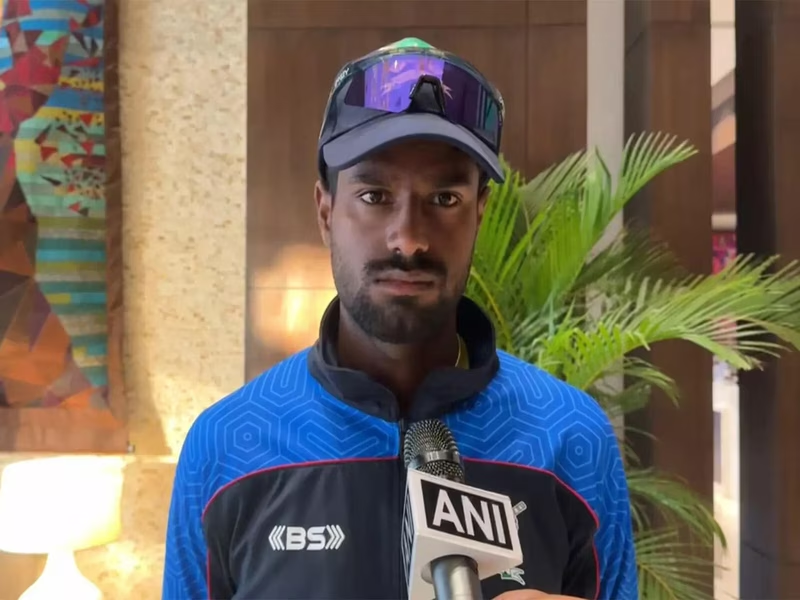Table of Contents
- A Record-Shattering Innings in Just 14 Balls
- Akash Choudhary Eight Sixes: The Mindset Revealed
- How It Happened: Ball-by-Ball Breakdown
- Where This Ranks in First-Class History
- The Coach Behind the Explosion
- What This Means for Meghalaya’s Cricket Future
- Summary
- Sources
In a moment that will be replayed in highlight reels for years to come, Meghalaya’s Akash Kumar Choudhary didn’t just score runs—he redefined what’s possible in first-class cricket. On a quiet day in the Ranji Trophy 2025, batting at number eight, Choudhary unleashed an astonishing assault that included eight sixes in a row, racing to a fifty off just 11 balls—the fastest in the 92-year history of the Ranji Trophy and one of the quickest in global first-class cricket .
His final score? 50 off 14 deliveries. All of it came in a single, explosive over and a bit more. The innings helped Meghalaya declare at a mammoth 628/6, but the real story wasn’t the total—it was the sheer audacity of Choudhary’s knock. And when asked what fueled his rampage, his answer was refreshingly simple: “My coach said, ‘Go and attack!’”
A Record-Shattering Innings in Just 14 Balls
Before Choudhary’s blitz, the fastest fifty in Ranji Trophy history belonged to Bandeep Singh (Punjab, 2015), who reached the mark in 16 balls. Globally, the first-class record is held by Pakistan’s Misbah-ul-Haq (50 off 12 balls in 2014), though some dispute the exact count due to no-balls.
Choudhary’s 11-ball fifty not only smashes the Indian domestic record but ties him with South Africa’s David Miller (50 off 11 balls in a 2015 first-class match) for the joint-fastest in recorded first-class cricket . What makes it even more remarkable is that he achieved this from No. 8—a position typically reserved for tailenders, not record-breakers.
Akash Choudhary Eight Sixes: The Mindset Revealed
In a post-match interview, Choudhary, 24, revealed the mental switch that flipped during that fateful over. “We were already past 600, and the declaration was near,” he said. “My coach, Sanjay Singh, just looked at me and said, ‘Go and attack! Don’t think—just hit!’”
That freedom, Choudhary explained, was liberating. “When you’re told there are no consequences, your natural game comes out. I wasn’t thinking about the score or my average—I was just reacting to the ball.”
This fearless philosophy echoes the modern coaching trend of empowering players to express themselves—especially in dead-rubber or declaration scenarios where traditional caution gives way to innovation .
How It Happened: Ball-by-Ball Breakdown
Facing medium-pacer Tanush Gusain of Uttarakhand, Choudhary walked in at 606/6. What followed was pure carnage:
- Ball 1: SIX – Pulled over deep midwicket.
- Ball 2: SIX – Straight down the ground.
- Ball 3: SIX – Lofted over extra cover.
- Ball 4: SIX – Scooped over fine leg.
- Ball 5: SIX – Flat-bat drive over long-on.
- Ball 6: SIX – Another straight six. Over complete.
- Ball 7 (next over): SIX – Reverse sweep for six!
- Ball 8: SIX – Full toss dispatched over long-off.
- Ball 9: 2 runs – Fifty completed!
- Ball 10–14: Dot, 4, 1, 1, 1 – End of innings.
Eight sixes in nine legal deliveries. A strike rate of 357.14. Cricket doesn’t get more explosive than this in the red-ball format.
Where This Ranks in First-Class History
While T20 cricket is known for such fireworks, first-class cricket rarely sees such aggression—especially in India, where pitch conditions often favor bowlers. Choudhary’s feat is even more impressive given the context: it came in a traditional, four-day Ranji match, not a franchise league.
According to ESPNcricinfo’s archives, only three players have scored a fifty in ≤12 balls in first-class cricket:
- David Miller (SA) – 50 off 11 balls (2015)
- Misbah-ul-Haq (PAK) – 50 off 12 balls (2014)
- Akash Choudhary (IND) – 50 off 11 balls (2025)
This places him in elite company—proof that explosive batting isn’t confined to white-ball cricket.
The Coach Behind the Explosion
Sanjay Singh, Meghalaya’s head coach and a former Railways player, has been instrumental in shaping the team’s aggressive identity. Under his guidance, Meghalaya has evolved from a minnow to a competitive side in the Plate Group.
“We train our batters to be situationally aware,” Singh told reporters. “If the match context allows freedom, we encourage them to play without fear. Akash has that power—and today, he showed it to the world.”
[INTERNAL_LINK:how-domestic-coaches-are-changing-indian-cricket] explores how regional mentors like Singh are reshaping India’s cricketing grassroots.
What This Means for Meghalaya’s Cricket Future
Meghalaya, granted full Ranji status only in 2018, has long flown under the radar. But moments like Choudhary’s knock put the northeastern state on the cricketing map. With the BCCI’s increased focus on developing talent from non-traditional regions, such performances could attract more funding, better infrastructure, and national attention.
As the BCCI’s Domestic Cricket Revamp Initiative emphasizes, success in the Ranji Trophy is now seen as a direct pipeline to India A and national camps. Choudhary’s name will undoubtedly be on selectors’ radars.
Summary
The Akash Choudhary eight sixes blitz wasn’t just a viral moment—it was a historic milestone in Indian first-class cricket. By smashing the fastest Ranji fifty off just 11 balls, Choudhary redefined what’s possible from a lower-order batter and showcased the power of fearless, coach-backed intent. As Meghalaya celebrates its new star, the cricketing world is reminded that records can fall anywhere—even in the most unexpected corners of the domestic circuit.
